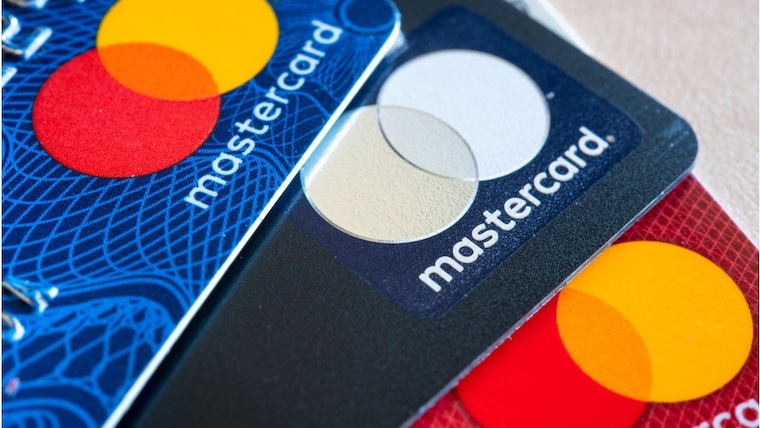Online payment fraud is a growing concern, with losses projected to exceed $91 billion by 2028, totaling over $362 billion globally in the next five years, according to a study by market research firm Juniper Research.
Addressing this issue is imperative before these estimates become a reality. One promising solution is the adoption of tokenization technology by companies like Mastercard. Mastercard reports that its technology adoption rate has been growing at 50% annually, now securing approximately 25% of all e-commerce transactions globally.
The landscape of online payments is poised for a significant transformation. Starting in 2030, Mastercard plans to eliminate the need for Europeans to manually enter their card numbers during online transactions, regardless of the platform or device, according to lagradaonline.com.

In an announcement on June 11, 2024, Mastercard revealed that all cards issued on its European network by 2030 will be tokenized. Tokenization technology means that the familiar 16-digit card number will be replaced with a randomly generated “token.” Mastercard has been working with banks, fintech companies, retailers, and other partners to transition to this new system. The goal is to implement a one click payment button across all online platforms by 2030.
This change aims to enhance the security of consumers’ cards against fraudulent activities, addressing critical needs in today’s cybersecurity landscape. Mastercard’s initiative marks a significant step towards bolstering online payment security. The shift to tokenization not only simplifies the user experience but also significantly reduces the risk of fraud by replacing sensitive card information with secure tokens.
As cyber threats continue to evolve, such advancements in payment technology are crucial for protecting consumers and maintaining trust in digital transactions.
Additionally, Mastercard is set to revolutionize the online payment experience by eliminating the need for users to repeatedly input passwords. The introduction of passkeys will replace traditional passwords, and biometric authentication, such as thumbprint recognition, will enable one-click payments at checkout.
This advancement in tokenization technology ensures that when cards are stored on retailers’ websites or in digital wallets, they can be automatically updated if replaced or renewed. Mastercard is confident that this will significantly reduce fraud rates across e-commerce sites, particularly if implemented worldwide.
Studies by market research firm Juniper Research estimate that losses from online payment fraud could exceed $91 billion by 2028, totaling over $362 billion globally in the next five years. Addressing this issue urgently is crucial to prevent these projections from becoming a reality.
Mastercard’s adoption of tokenization, which has been growing at a rate of 50% annually, currently secures approximately 25% of all e-commerce transactions globally on its network.
Europe has been chosen for this rollout due to its strong history of payment innovations, such as contactless payments and online banking, which have facilitated the sharing of bank data to access new financial products. Valerie Nowak, Executive Vice President of Product and Innovation at Mastercard Europe, stated, “In Europe, we have seen tokenization gaining momentum across the ecosystem; the convenience and reduced rates of fraud sell themselves. We are confident that reaching this vision by 2030 is a win-win-win for shoppers, retailers, and card issuers alike.”
THE FUTURE OF CARDS?
The evolution of payment methods has seen significant changes over the decades. From the introduction of credit cards in the 1950s and 1960s to the widespread adoption of online payment systems with the internet in the early 2000s, the process has continually advanced.
Initially, credit card payments involved bank clerks checking card numbers against lists of invalid numbers or contacting issuing banks to verify the payer’s identity. This evolved to using “zip-zap” machines that imprinted card numbers on carbon paper packets.
In the 1970s and 1980s, magnetic stripes and electronic payment terminals became prevalent, followed by the introduction of microchips in cards, which stored data on the cardholder, card number, and expiry date.
Mastercard anticipates that the transition to this new “embedded” payment system will be as significant as the shift to chip-and-PIN technology or the widespread adoption of contactless payments, now common in developed economies worldwide.
Mastercard’s technology aims to make the online payment experience as seamless as in-store contactless payments. Consumers will be able to make one-click payments across various devices, including smartwatches, home assistants, and even cars.
This upcoming transformation reflects Mastercard’s commitment to improving the security and convenience of online transactions, marking a significant step forward in the evolution of digital payments.
By implementing these advancements, Mastercard is not only enhancing the security of online transactions but also setting a new standard for the future of digital payments. As the landscape of online payments continues to evolve, the integration of tokenization and biometric authentication promises to deliver a safer and more efficient payment experience for consumers worldwide.
